| Home | | | About | | | PORTFOLIOS | | | Contact |
BLOG/WRITING
Hyper Objectivity

Jean Metzinger, 1911-12, La Femme au Cheval (Woman with a Horse)
'And then it happened.
He had never felt this outside of the Zone, and even in the Zone it had only happened two or three times. Suddenly, he seemed to be in another world. A million smells assaulted him at once - smells that were sharp, sweet, metallic; dangerous, caressing, disturbing; as immense as houses, as tiny as dust particles, as rough as cobblestones, and as delicate and intricate as watch gears. The air turned hard, it appeared to have surfaces, corners, edges, as if space had been filled with huge course spheres, polished pyramids, and gigantic prickly crystals, and he was forced to make his way through all this, as if in a dream, pushing through a dark antique shop full of ancient misshapen furniture.....This only lasted a moment. He opened his eyes and everything disappeared..This wasn't another world - it was his same old world turning an unfamiliar side toward him, revealing it for an instant, then immediately sealing it off, even before he had a chance to investigate.'
Red Schuhart, a 'Stalker', Roadside Picnic, by brothers Arkady and Boris Strugatsky
Red Schuhart seems to be having an extra-dimensional experience in the above quote, and the vision seems much like that of a Cubist painting or drawing.
The fantastic thing about stories, about narratives, is that they can contain information as well as just being entertaining. Roadside Picnic has an enormous amount of metaphors and allegorical informational qualities to take note of; the whole story and aspects of it can allude to, and be transferred to, other subjects. My first reference to the book in a post below was thinking of the mysterious and incomprehensible alien artifacts found in the Zone similarly to art, which when at it's best seems to me to be mysterious and incomprehensible. In the quote above, where Schuhart seems to see space unfold like paper revealing novel dimensional surfaces and intricacies, I see a link to Cubism, 'hyperobjects', or 'hyperobjectivity'. I think of Cubism as hyperobjective perception; it wasn't just a style it was a relatively formal analysis of objects and the space surrounding them from multiple viewpoints. I like to use the word hyperobject for form viewed from various locations, viewpoints, perspectives, in space. Or, for forms moving through space so that their aspect or viewpoint changes infinitely from a fixed position. Or, for forms in which the delineation between the object and the surrounding space becomes ambiguous. This seems to be what is happening to Schuhart's vision in 'Picnic'; he seems to be describing a momentary Cubist vision of the world in which occult form and dimensionality appear to override his standard perceptual model of objects in space. It's not so much a drug induced hallucination as a dimensional revelation from an altered mental viewpoint. Schuhart could be describing a Cubist painting; compare his description in words to the image of Metzinger's La Femme au Cheval above.
Anyone who has put in the thousands of hours to learn how to draw has spent time not just describing form, but looking at it intently and, at a subconscious level, studying it's peculiar nature, as well as the peculiarities of our perception of the stuff that the world appears to be made of. Anyone who has spent hours beginning to learn how to draw (in the classes I used to instruct anyway) learned how to accurately measure angles and proportions of their subject on an imaginary 'projection' beside their easel and transfer the information from the projection 'beside' their easel and onto their paper. As angles are measured, the construction lines sketched vector off into the surrounding negative space. The initial working drawing executed in this formal manner, a measured planar drawing often looks very 'Cubist'. It takes very little imagination to take the chiseled planes that describe the form and project them off into space and reciprocally have negative space invade the form through these channels. I suspect this very analytical kind of 'constructed' and measured drawing might have informed Cubism; indeed early Cubism was called Analytical Cubism, a clue that it wasn't just a stylistic flourish but a measured way of seeing the world.

First steps in a constructed drawing from a 'Planes Of The Head' can often have a Cubist appearance.
But there are certainly other fairly obvious precipitating factors that helped establish the Cubist vision, and indeed the vision of the society of the time. Photography for example. In the years and decades prior to Cubism's inception photography emerged into the visual domain and stop motion photos and multiple exposures revealed how form traveled through space adding a distinctive new dimension to visuality; time. Practically this allowed, for example, the discovery of how horses run. Our narrow perception in time doesn't allow us to comprehend the rapid movement of a horses legs and the placement of their feet when they gallop; prior to the camera horses running were ridiculously depicted as though rabbits hopping. This was not the fault of the human artist, but rather the limitations of human perception. Photography; stop motion photography, allowed more than a glimpse into another dimension, and effected the vision and perception of artists of the time and therefore the imagery they produced.
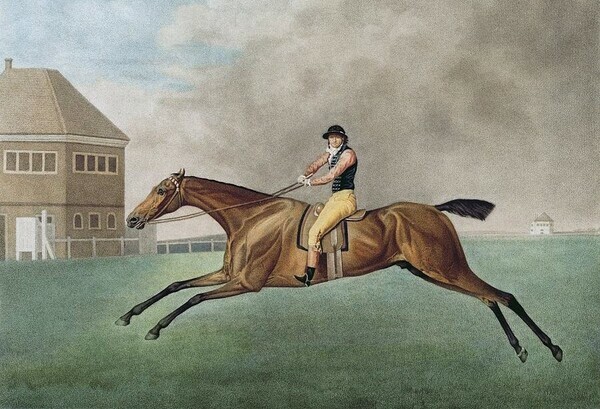
A painting by the artist, anatomist and observer of all things equine, George Stubbs, shows how hopeless it is was for even an observant human trapped in a narrow perception of time to try and depict a galloping horse.
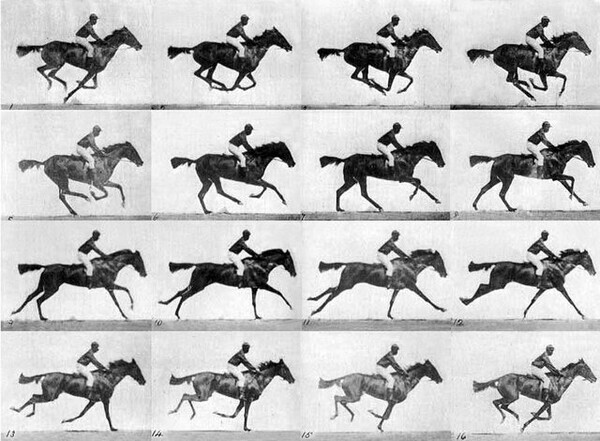
With the advent of photography with fast shutter speeds Edweard Muybridge was able to solve 'The Galloping Horse Problem'.
There can be little doubt that Cubism was precipitated in part by trying to suggest an extra-dimensionality. Think of Marcel Duchamp's Nude Descending a Staircase; Duchamp is almost certainly depicting various imagined planes on a figure constructed similarly to a planar drawing as they both move and project through space as the figure/object/form descends a staircase. This creates a fascinating, wonderful, dizzying effect, also not unlike Schuhart's brief vision of the world.
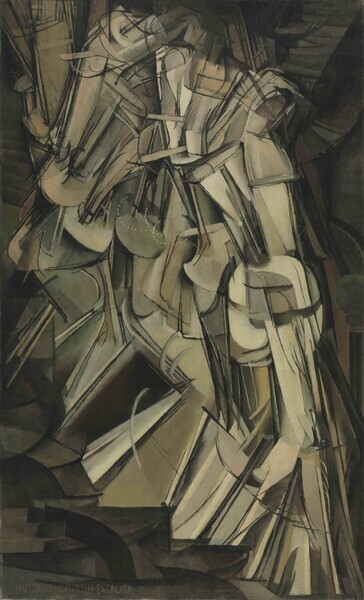
Duchamp's Nude Descending a Staircase; structural planes moving through space.
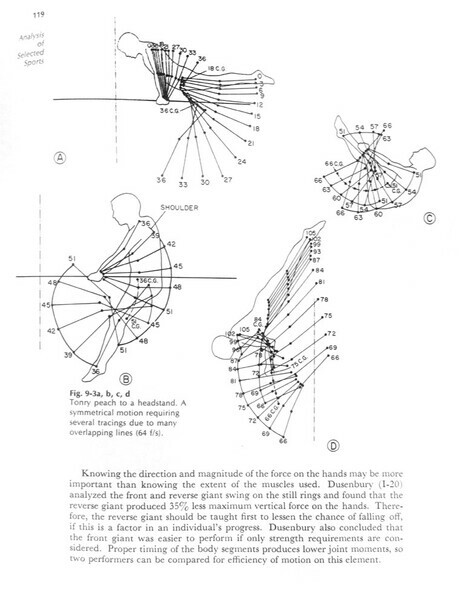
For comparison to 'Nude Descending'; diagramatic illustrations of human movement plotted in space from 'Patterns Of Human Motion, a cinematographic analysis, ' by Stanley Plagenhoef, 1971. These were produced by scientific researchers decades after Nude Descending.
There were other ideas in the realm of physics during this time challenging the nature of matter, of substance, of the stuff we and our world is made up, the stuff artists spend vast amounts of time drawing and staring intently at. Physicists were starting to challenge the meat and potatoes structure of Newtonian physics. They were starting to discover, through theoretical, mathematical and experimental processes, an astonishing vision of how the universe is working outside the scale of human existence and perception...not dissimilar to how photography revealed a horses legs and hooves moving through time when galloping. However, if the movements of a horse were comprehensible when the dimension of time was applied to imagery, in science things were weirder still. The bigger things got and the smaller they got the more unusual and unhinged from the mechanics of Newtonian Physics they became.
For a complex understanding of early 20th century thinking it might help to imagine arts and sciences, and no doubt other, streams of understanding (psychoanalysis, experimentation with mind altering drugs, for example) forming a confluence which had manifestations in the visual arts.
Back to La Femme au Cheval. Neils Bohr, the physicist who discovered the principle of complimentarity in quantum theory bought the painting, after previous ownership by a poet and a collector, and installed it in his office. Bohrs had allegedly read the book 'Du Cubisme' which outlined Cubist principles, of which Metzinger was an author and was inspired to realize that objects, such as atoms, as objects, appear quite different when viewed from different vantage points; for example appearing as either a wave or a particle. The perception of matter was dependent on vantage point; it might be here or there; it might occupy space or not. I have no idea of how quantum theory works but I see images of space folding or curling and overlapping with time and other inconceivable dimensions. I see, through imagination, the form and matter we daily take for granted transform into something that looks like a Cubist painting, or something akin to Red Schuhart's vision.
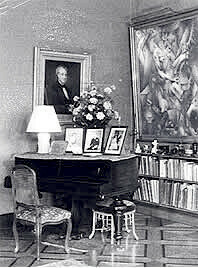
La Femme au Cheval in quantum physicist Neils Bohr's study.
What I find so extremely interesting here is that an analogous understanding of objects, space and dimensions can emerge simultaneously among people who are skilled at observational drawing, and people who are skilled at mathematics and physics. Both seem to have contributed to an new understanding of reality. Both are, in their respective ways, describing form and space. For me it shows that valuable knowledge can be obtained not just by academic study but by developing visual skills.
This anecdote isn't the only example I've discovered that suggests that skills based visual artists were and are capable of contributing to scientific understanding of the world and how it's perceived; I'll put up another post showing how I think artists might have made and used discoveries early in the 20th century that weren't subsequently discovered and documented by research psychologists until decades later.
In a contemporary art world where I believe drawing, the describing of form, has been devalued to mere 'mark making', I find great solace in these early and significant contributions of skilled artists to the human body of knowledge.